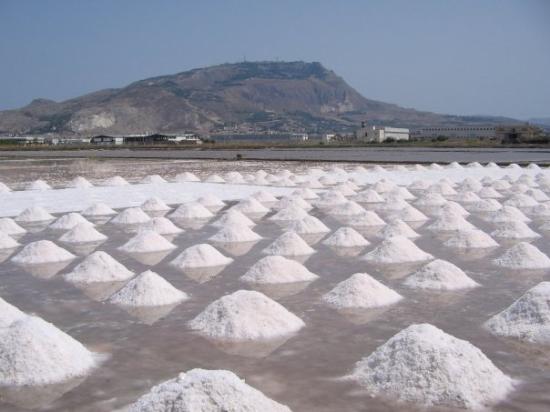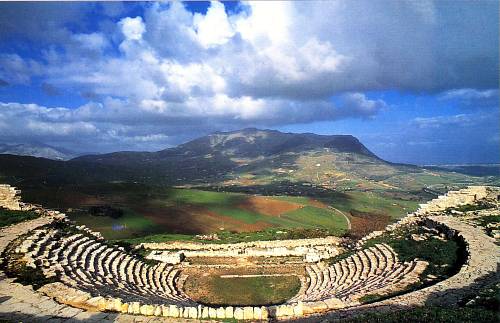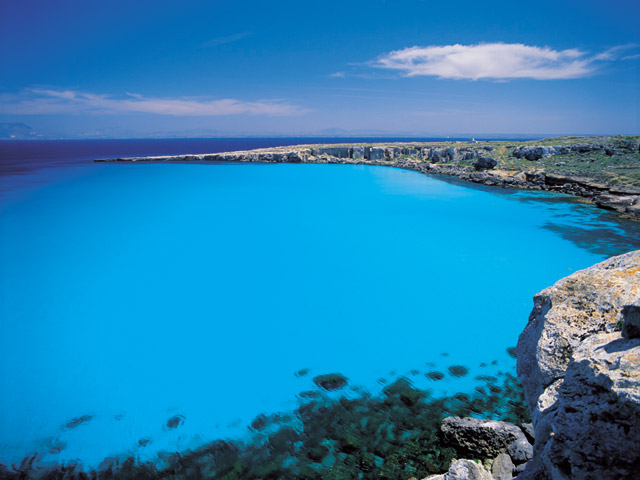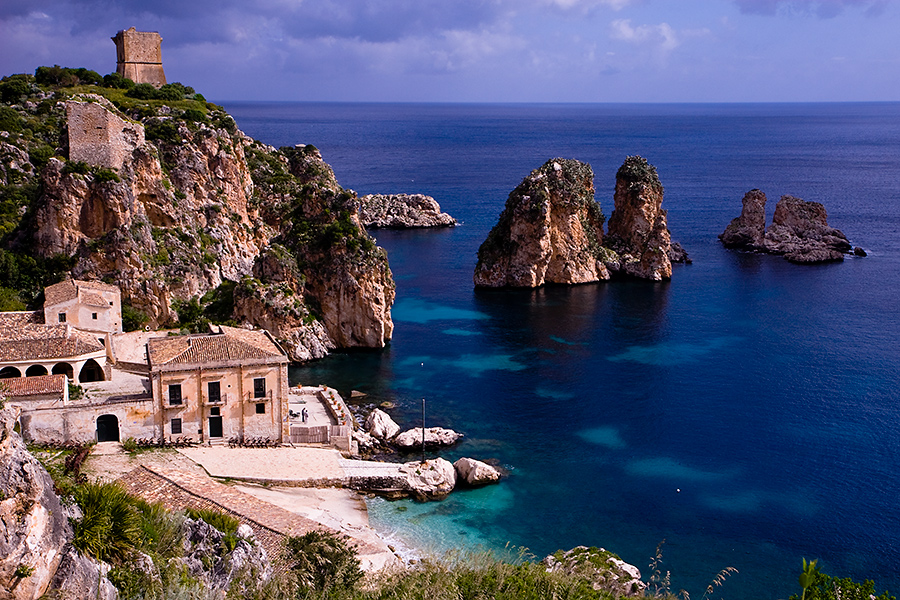
|


|
|

|

|
Trapani
For those who would love to know about the cultural heritage of this
province, we recommend firstly the capital, Trapani, with its numerous
churches located in the historic centre, the Misteri sculptural groups
that are carried on shoulders during the procession on Good Friday and are made
of canvas and glue (a typical technique from Trapani), the Regional Pepoli
Museum which holds the most precious corals in Sicily, the former prison
building, refurbished in 2007, the Ligny Tower which now houses the
Museum of Prehistory and the Colombaia. In addition to the historical centre,
Trapani has another huge asset: the Salt Pan Reserve with its Salt
Museum.
|

|
Mozia, Marsala,
Mazara, Selinunte
Continuing along the "Via del Sale", you can reach Mozia
by boat. It is a small island that conserves precious, pristine
remains of the Phoenician-Punic civilization, organised with tourist paths.
Continuing south along the coast, you can visit with Marsala and
Mazara del Vallo with beautiful cathedrals situated in the
characteristic historic centres, and continuing to Agrigento, there is beautiful
Selinunte, with its archaeological park dating
from the fifth century BC. The park is situated on a hill above the mouth of the
BelizeRiver and is divided into the area of the Eastern
Temples, of the Acropolis and of the
Necropolis.
|
 |
Segesta
Segesta is about 20 km east of Trapani, and can be reached via the A29 motorway.
On a hill stands a Doric temple dating from the fifth century BC, while
in the valley nearby is the Greek theatre dating from the second century
BC where performances of various kinds are held in the summer every year. In
addition, there is a newly discovered shrine, the remains of which date
back to the IV-V century. |
.jpg) |
San Vito Lo Capo
Continuing along the north-east coast, we come to the village of San Vito Lo
Capo, an important tourist town, above all from May to September. To visit there
is the chapel of St. Crescenzia located at the entrance of the village
dating from the sixteenth century and the old Saracen fortress,
today a Sanctuary dedicated to San Vito, which contains, among many
treasures, a statue attributed to Gagini.
The town of San Vito Lo Capo is situated on the north coast of
Sicily, between Palermo and Trapani. Its charm derives primarily from the
magnificent white sandy beach lapped by the crystal clear sea with a
lighthouse in the background and palm trees in the foreground: a real
picture postcard. Not to be missed, once in San Vito Lo Capo, is a visit (only
on foot) to the Zingaro Nature Reserve: unspoilt sea and a land that houses many
rare species of flora and fauna. There are also many events hosted by the
town of San Vito Lo Capo in the summer: from the Jazz Festival to the CousCous
Fest, and the literary review “libri, autori e buganvillee” ("books, authors and
bougainvillea"): hobbies and pastimes for all ages.
|
.jpg) |
Erice
Reachable from Trapani by bus, car or cable car, Erice - home of the "Ettore
Maiorana" international scientific
centre - is a gentle medieval village which has remained true to its roots and
with its architecture, landscapes, and decorations intact. To visit are: the
Castle of Venus, the Balio, the Cathedral with its tower and, along a
planned itinerary, the many churches in the village. What is more, the view
which can be admired from Erice is breathtaking: from the Balio tower you can
admire the city of Trapani with its sickle-shaped coastline and its expanse of
sea, salt pans and the Gulf of Bonagia with Mount Cofano. A walk through the
streets of Erice, therefore, leaves you with beautiful memories that can be
considered to be the epitome of a journey into the heart of Sicily.
|
 |
Egadi Islands: Favignana, Levanzo, Marettimo
On these islands, the places to visit of a purely cultural value include
the old Tonnara (Tuna fishery) of Favignana and, on Levanzo, the
Grotta del Genovese (cave) which preserves graffiti from the Pleistocene age
and paintings from the Neolithic age.
Favignana, Marettimo and Levanzo can offer tourists
an excellent beach holiday in a quiet setting, away from crowded beaches. The
island of Favignana has more facilities and is famous for the Mattanza del
tonno (tuna slaughter). It has been further enhanced in recent years with
the creation of a sailing school in the old Tonnara(Tuna fishery).
Levanzo and Marettimo instead, remain real untouched pearls, and can be visited
on foot or via the many "sea taxi" services present on the islands. |
 |
Other places which are definitely worth visiting
Custonaci: - The cave, the cathedral
Valderice: The tonnara (tuna fishery) of Bonagia
Alcamo: The Conti di Modica Castle
Scopello: The stacks
Campobello di Mazara: The Cusa quarries
Mazara del Vallo: The GorghiTondi reserve
Gibellina: The ‘Cretto’ by Burri
Partanna: The Castle
Salaparuta: The Castle ruins
The Island of Pantelleria |
| |
|
|
|



